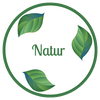|
Want to learn how I formulate my Luscious Lipstick? Read on for a look behind the scenes! First of all, every formulating session begins with cleaning and disinfecting the work surface and then sanitising all equipment by spraying it with isopropyl alcohol. This is important to comply with GMP regulations for UK cosmetic manufacture. Next, I assemble my ingredients. A lot of different things go into the making of the Luscious Lipstick, so this takes a while! Since the lipstick is available in so many colours, I usually make a batch of about 4 of each colour. In order to do this, I divide the ingredients into quarters and make four different colours at a time, as it is easier to weigh accurately if the amounts are larger. Below you can see the specialist ingredients weighed out in a beaker. These have to be added at the end of the process, so as not to overheat them. The waxes and butters are weighed out into a bain marie and put on the stove to melt. Now comes the fun part! I need to mix a pigment blend to add to the lipstick. Sometimes I'll be making a lipstick with only a single colour, but often I'll have a particular shade in mind and have to experiment with different pigment powders to get what I'm looking for. Of course I have to test out the colours as I go, so this stage of the process can get a bit messy! Don't worry, I hadn't just committed murder! This was trying to perfect the shade for the Jessica lipstick, attempting to get as close to the shade worn by Mrs Rabbit as possible. Once I'm happy with the pigment blend, I'll add it to the bain marie and mix it in. Lipstick needs to be heated to quite a high temperature, due to the melting point of the waxes used. Once everything is sufficiently liquid, the final ingredients have to be added and the mixture quickly poured into moulds, as it will solidify very rapidly. This is much easier to do in summer rather than winter, which is why I've been formulating a lot of lipsticks over the last few months, but the lipsticks do then need to be cooled in the fridge to harden fully. The moulds are greased with castor oil to make it easier to remove the finished lipstick. The final stage is to test the colour of the finished lipstick, generally using myself as a guinea pig. I've been having lots of fun over the course of this summer concocting exotic - and sometimes bizarre - pigment blends for lipsticks. Most of them are now available on the website, although I'm still working through getting them all photographed, so stay tuned! You can see the full range of shades available here!
0 Comments
Leave a Reply. |
KateThoughts, musings, and ruminations on skincare and related topics. Categories
All
Archives
March 2024
|



















 RSS Feed
RSS Feed
